Connective tissue is the most abundant tissue found in an animal body. They have large amount of extracellular materials called the matrix. The cells are widely separated. They are termed connective tissue because their main function is to link and support all other tissues in the body.
Connective tissue includes cartilage, bones, adipose tissue, blood etc. All connective tissues, except blood, secrete insoluble fibres of structural proteins such as collagen or elastin. These fibres provide elasticity, strength and flexibility to the tissue. These tissues also secrete modified polysaccharides, which forms the matrix by accumulating between cells and the fibres.
Classification of Connective tissue
Connective tissue can be broadly classified into three groups:
- Proper connective tissues
- Supportive connective tissue
- Fluid connective tissue
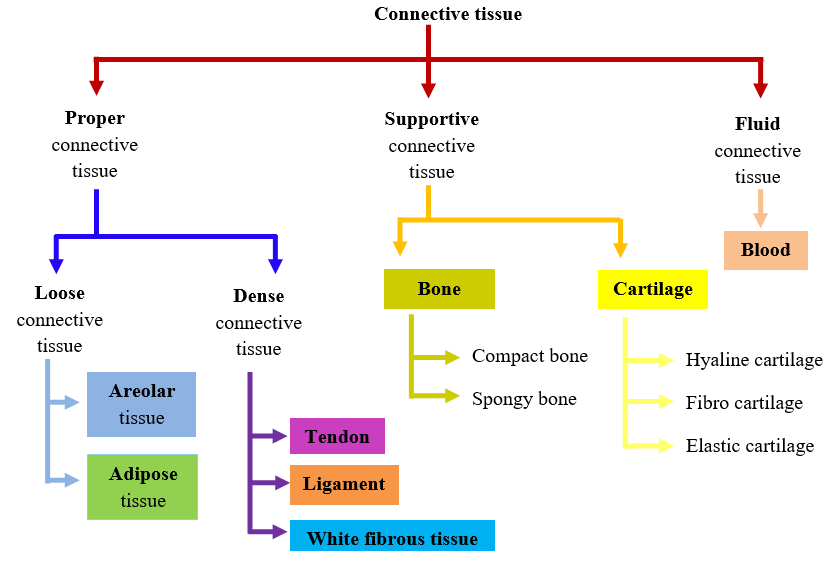
Loose Connective Tissue
The cells and fibres in loose connective tissue are loosely arranged in a semi fluid matrix.
Areolar Tissue
- It is present beneath the skin.
- It is composed of three types of cells and two kinds of fibres.
- Fibroblasts are irregularly shaped flat cells with long protoplasmic processes. They secrete elastin and collagen protein fibres.
- Macrophages are amoeboid cells which destroy microbes, foreign particles and damaged cells by phagocytosis.
- Mast cells are ovoid cells that store inflammation producing substances like histamines.
- The fibres found in areolar tissue are collagen and elastin.
- Collagen fibres have tensile strength and also are also involved in tissue repair.
- Elastin fibres protect the cells from mechanical stress.
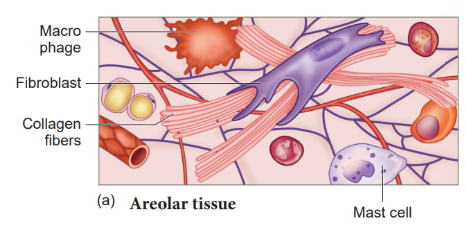
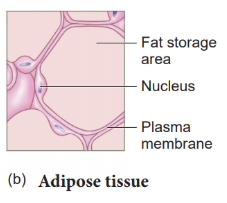
Adipose Tissue
- Adipose tissue consists of collagen fibres, fibroblasts, macrophages and adipocytes.
- This tissue synthesizes and metabolizes fat. Excess nutrients are stored in the form of fat in Adipocytes.
- They are found beneath the skin, and form an insulating layer to prevent heat loss from the body.
Dense Connective Tissue
In dense connective tissue, the cells and fibres are compactly arranged with little matrix in between.
If there is a regular pattern in the arrangement of fibres, it is called dense regular tissue. Usually, the collagen fibres occur in rows between parallel bundles of fibres (eg. Tendons)
Tendons
- Tendons connect muscles to bones.
- Collagen- Fibre bundles occur parallel to each other.
- Tendon cells are found in rows between these bundles.
- Elastin fibres are absent.
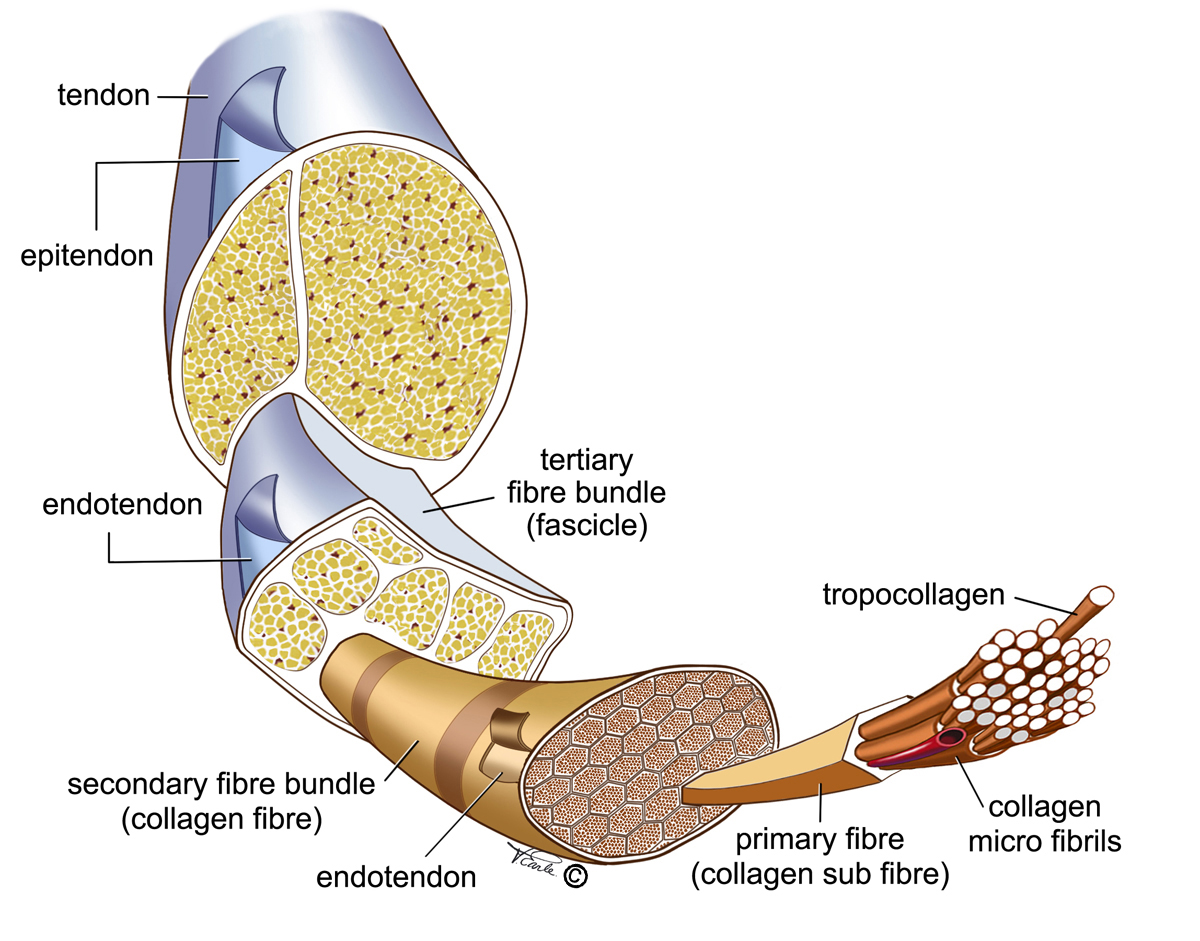
If the orientation of fibres is irregular, it is called dense irregular tissue. It has fibroblasts and fibres which orient in different directions.
Ligament
- It connects bones at the joints, and holds them in position.
- The collagen fibre bundles are found in different directions.
- Cells are scattered.
- Elastin fibres are very few.
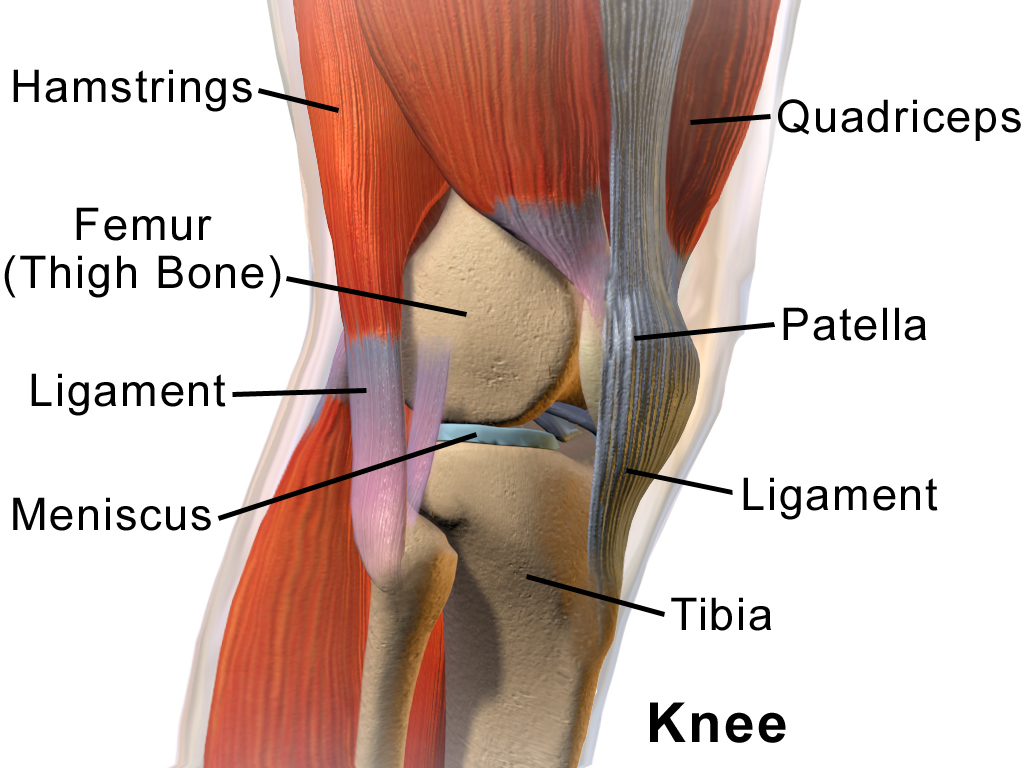
White fibrous tissue
- It is found at the joints between skull bones that are immovable.
- It is composed of a dense network of thick collagen fibre bundles, and thus has great tensile strength.
- This tissue contains very few fibroblasts.
Specialized Connective Tissue
It includes bone and cartilage.
Bone
- It is a very strong and hard connective tissue.
- The matrix of bones is highly calcified. It is rich in calcium salts and collagen fibres.
- Bones provide a structural frame to the body. It protects and supports the soft inner tissues and organs.
- The matrix occurs in concentric layers called lamellae around a central canal called Haversian canal. This canal contains blood vessels and nerves.
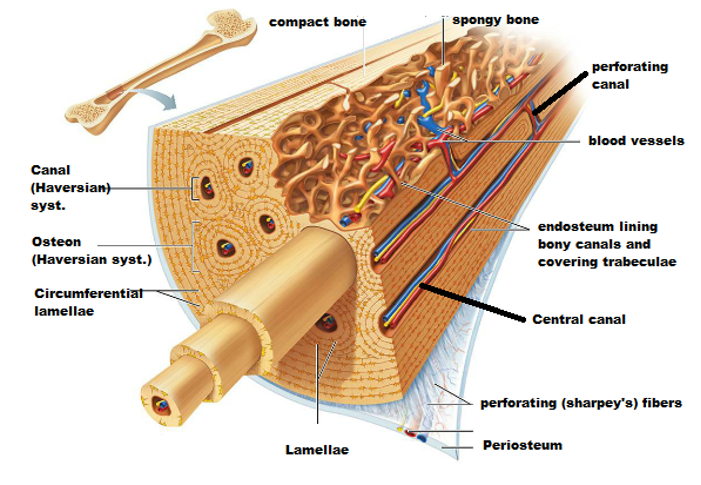
- The bone cells (called osteocytes) are present in small spaces called lacunae which are found in between the lamellae. Lacunae possess several projections called canaliculi.
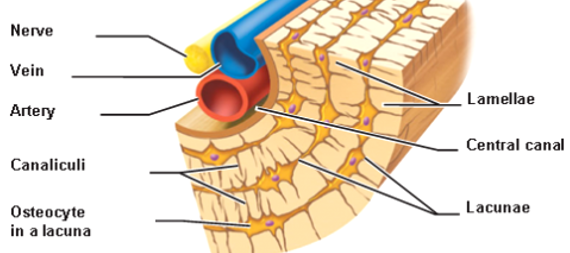
- Osteocytes are irregular cells with numerous protoplasmic projections.
- Compact Bone: it is composed of many parallel and longitudinal Haversian systems cemented together.
- Spongy Bone: It is found in the deeper and central parts of bone and does not contain the Haversian systems. It is composed of irregular bony plates called trabeculae. Each trabeculae contains irregularly arranged lamellae with lacunae in between.
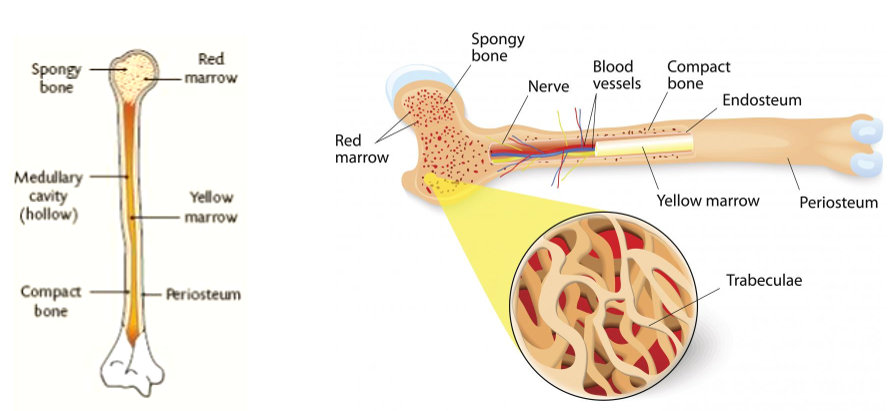
- The bone marrow in some bones act as the sites of production of blood cells.
Cartilage
- Cartilage is a flexible semi-rigid connective tissue.
- The matrix is neither calcified nor arranged in concentric circles.
- Chondrocytes (cartilage cells) are bluntly angular and lack protoplasmic processes. They occur as clusters of 2 or 3 cells, in the lacunae of the matrix.
- There are three types of cartilage tissues.
- Hyaline cartilage
- The matrix is homogeneous and transparent (hence the name hyaline).
- It is elastic and does not contain any fibres.
- It is not supplied with blood vessels or nerves.
- Hyaline cartilage is found in larynx, tracheal rings, ribs and nasal septum.
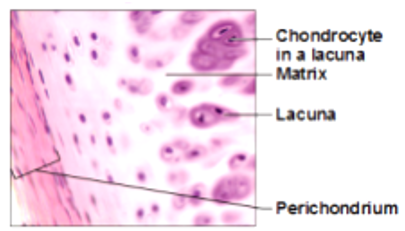
- Fibro-cartilage
- The collagen fibre bundles occur parallel to each other, and the lacunae (containing chondrocytes) are in between the bundles.
- It provides tensile strength and flexibility to the body parts in which it is present.
- It is present in between vertebrae and pubis symphysis.
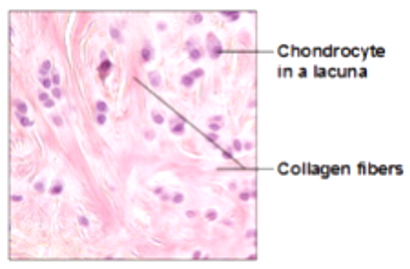
- Elastic cartilage
- It is composed of a dense network of elastin fibres.
- The chondrocyte containing lacunae are found scattered between the fibres.
- The presence of elastin fibres makes the cartilage elastic and pliable (flexible).
- It is present in epiglottis, Eustachian tube and pinna of the ear.
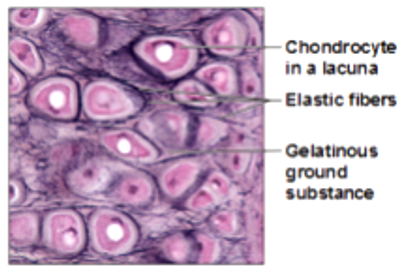
Fluid Connective Tissue
Fluid connective tissue lacks any kinds of fibres in the matrix. The fluid connective tissue present in animals is blood.
Blood
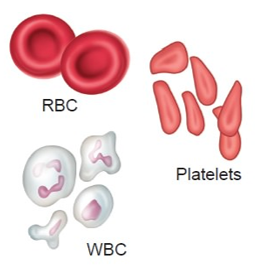
- Blood is the main circulating fluid in the body. It helps in the transport of various substances.
- It is composed of plasma and formed elements.
- Blood plasma is a slightly alkaline aqueous fluid. It contains 92
- It also contains three major classes of proteins – serum albumin, serum globulin and fibrinogen.
- The formed elements are RBC (red blood cells), WBC (white blood cells) and platelets.